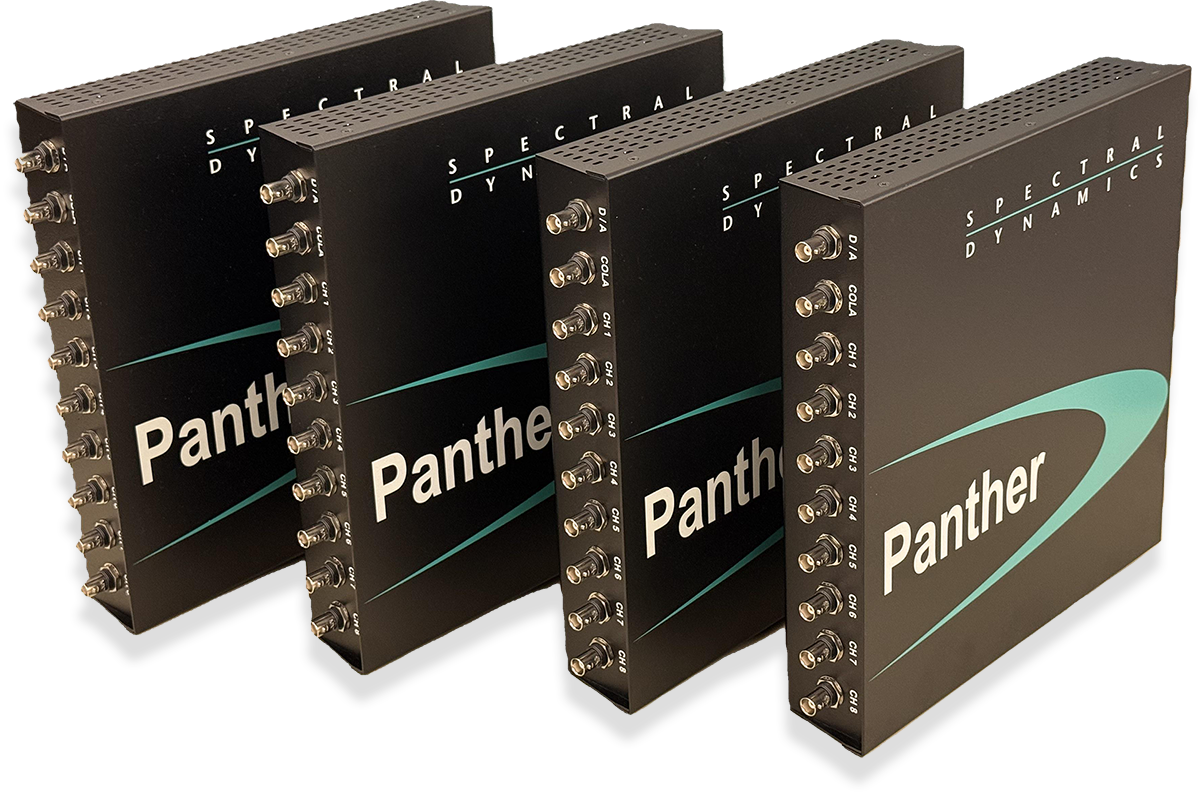Panther Comparison with Other Systems
| Feature | Spectral Dynamics Panther | General Competitors | ||
| Control approach | Uses patented, advanced digital filters and optimization methods tailored for each test type. Adaptive control updates the system model in real-time during the test. | Utilize adaptive control schemes that may be more generalized or less computationally intensive. Some may focus on specific types of disturbances. | ||
| Computational power | The system uses immense computational power from powerful processors to perform multi-dimensional optimization, even with numerous input and control channels. | Lower-cost or less advanced systems may have less computational power, potentially leading to slower control response, especially in complex or non-linear scenarios. | ||
| Control speed and stability | Provides rapid equalization and stable control in the face of non-linear responses, protecting the test article and equipment. Minimizes the time to reach full test levels. | Speed and stability can vary depending on the specific system and its computational abilities. Less advanced systems may struggle to maintain stability with rapidly changing non-linearities. | ||
| Test types | Optimized adaptive control methods for a wide range of test types, including sine, random, shock, and combined modes like sine-on-random. | Most modern controllers offer a variety of test types, but the quality of the adaptive control for specific modes may vary. | ||
| Multi-axis control (MIMO) | In advanced multi-exciter systems like the Jaguar (which also uses Spectral Dynamics' adaptive technology), it controls not only magnitude but also phase relationships between shakers, ensuring safe and accurate multi-axis control. | MIMO control in competitor systems also controls multiple shakers, but the effectiveness of adaptive control in managing phase relationships and complex non-linearities varies. | ||
| Handling of non-linearities | The adaptive algorithm and real-time model updates allow the Panther to quickly and accurately compensate for complex non-linear structural problems. | Systems with less sophisticated algorithms may be slower or less accurate in correcting non-linear responses, potentially requiring more manual intervention. |
Summary
 While most advanced vibration controllers employ some form of adaptive control, the Spectral Dynamics Panther differentiates itself through its:
While most advanced vibration controllers employ some form of adaptive control, the Spectral Dynamics Panther differentiates itself through its:
Patented algorithms: Specialized, patented methods are designed for superior performance across various test types.
Computational power: A robust, powerful architecture allows for rapid, multi-dimensional optimization that keeps up with complex changes.
Real-time model updating: The system updates its control model on the fly to respond to non-linearities and time-varying dynamics, ensuring superior test accuracy and safety.
Forward-looking technology: Anticipating the next control error allows for faster and more stable control, crucial for demanding test conditions.

